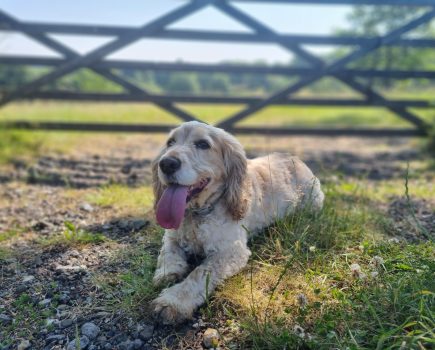Wendy Findlay discusses whether or not to shoe horses
Regular shoeing is accepted as part and parcel of horse ownership. This is because shoeing is traditionally believed to protect the horse’s hoof when it’s in hard work. The shoes prevent the hoof from wearing down too far and keep the horse sound. The demands made of the horse carrying the weight of a rider, and riding over rough ground are believed to make shoeing an absolute requirement. Although young horses and ponies are usually left unshod, when they start work around the age of three or four, they will be attended to by the farrier. It’s one of the things you do when you bring a horse into work – not only do you check his teeth, make sure his worming and vaccination programmes are up to date, but you also get him shod. The need for shoes seems obvious. A horse which casts a shoe or has just had his shoes removed is unlikely to go sound if trotted over stoney or gravelly ground. Equally, a horse that is normally kept on grass pastureland will almost certainly be tender-footed if asked to carry a rider long distances over uneven stoney ground. Without shoes, his feet simply aren’t tough enough.However, there are people who don’t shoe their horses and ponies at all. They’ve opted instead to let their horses go barefoot, and their horses are sound and can do all the things a shod horse can do – endurance riding, showjumping, eventing, dressage, point to pointing etc. In fact, not only can the horse do these activities, but do them well, with improved grip, agility and less unsoundness than a shod horse. So how are they managing to achieve this? It’s obviously not just as simple as taking off your horse’s shoes and hoping for the best. It’s a rare horse that takes to going barefoot over all terrains straight away. There has to be a transition period, a time of adjustment for the hooves. We don’t take an unfit horse and expect him to do 30 mile endurance rides without a fitness programme first. It’s the same for making the changeover to barefoot riding. The average horse spends his time standing in a stable or wandering round an acre of soft, and often wet, field. His feet can’t be expected to be tough enough to cope with the demands of riding on roads and stoney lanes without a time of build-up. This is, of course, the reason behind putting shoes on your horse. He is sound on grass and a sandy manege but lame on stones. Nail on shoes and he is sound on stones as well. An instant solution. So what is actually wrong with putting shoes on your horse? After all, generations of horses have been shod and led long and useful lives, haven’t they? Actually, shoeing is a relatively recent phenomenon. Looking back in history, it’s interesting to learn that the horses of the Greek and Roman armies were not shod, nor were the ponies of the Mongolian hordes. We know that these horses had high demands made of them. They were expected to travel long distances day after day over rough and difficult terrain. Despite carrying a rider, weapons and gear, their feet didn’t wear out. It’s only in the Middle Ages that we first come across evidence of horses being shod. Heavy battle horses were confined in stalls in often wet and muddy conditions, which weakened the hoof, and foot rot was a problem. Shoeing became necessary to keep the horses sound. Thus a tradition was started to which the majority of horse owners adhere today.One of the fundamental differences between the horses of the Roman army and those battle horses of the Middle Ages was in the way they were kept and the terrain on which they worked. The former were kept out and spent most of their time on the move on varied stoney terrain. They covered long distances regularily, whereas the horses of the Middle Ages were kept confined and had to contend with wet and muddy conditions. Nowadays, the majority of horses and ponies kept in the UK are spending the large part of the day and night confined to a stable, with turnout or exercise for maybe an hour or two each day. This lack of movement is a contributary factor to the modern horse needing to be shod. Another line of thought is that we have selectively bred horses too far – breeding for characteristics such as speed, jumping ability etc – and not paid enough attention to hoof quality. The problem with shoeingBarefoot enthusiasts believe that the nailing of a metal shoe to the hoof fundamentally changes the shape or structure of the hoof, and consequently the way in which the horse moves. The hoof is weakened because the shoe prevents the horse’s feet functioning in the natural way.They look to the wild horse hoof as a model of a horse’s hoof at its best. They observed that wild horses can roam 15 to 20 miles a day, remain sound and never need the attention of a farrier. Surely, they reasoned, domesticated horses could do the same, given the right conditions.The transition periodAs mentioned previously, a horse that has been kept shod for most of his life will need time to adjust to going barefoot. His feet will have to grow into the right shape for him to be able to go barefoot confidently. When the shoes are removed, the feet will need to be given a ‘barefoot trim’. This is not the same sort of trim the farrier would do if the horse was being turned out for rest with his shoes off. Then the horse’s hooves have to be given the opportunity to grow towards the ‘ideal’ wild horse model. This can take time. It’s a mistake to think “oh great, I’ll whip the shoes off and go barefoot, its better for the horse and just think what I’ll save on shoeing bills” because it requires plenty of commitment and ongoing care from the horseowner to achieve a happy barefoot horse.In a future article I will look at a number of horses that, after years of shoeing, have recently been started barefoot. In the meantime, if you’re interested in finding out more about riding your horse barefoot, a good place to start is the website at www.barefoothorses.co.uk This article is from the June 2006 issue of Country Smallholding magazine. << To order back issues click the link to the left.







